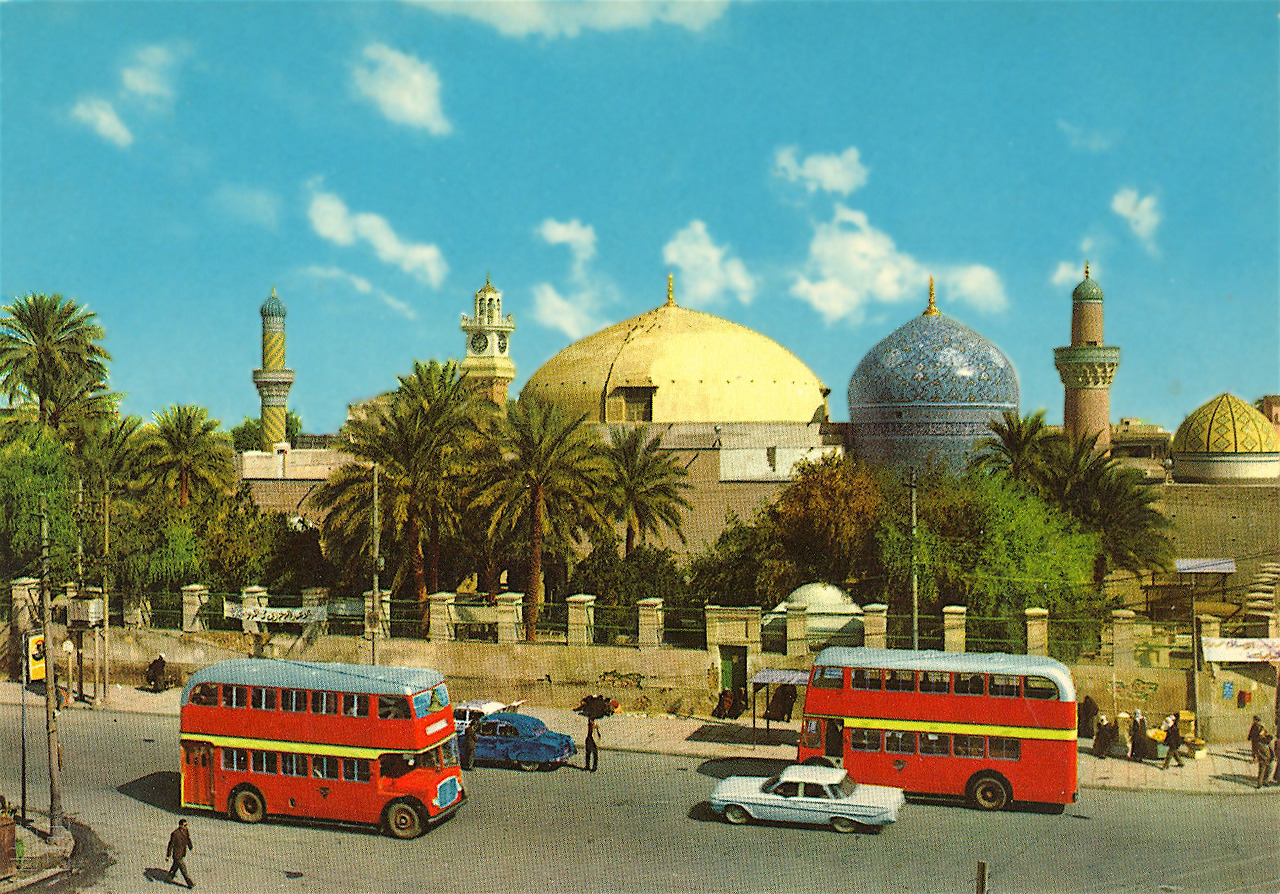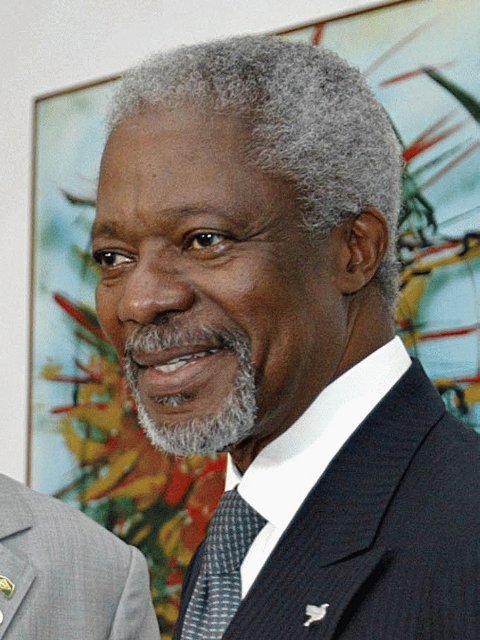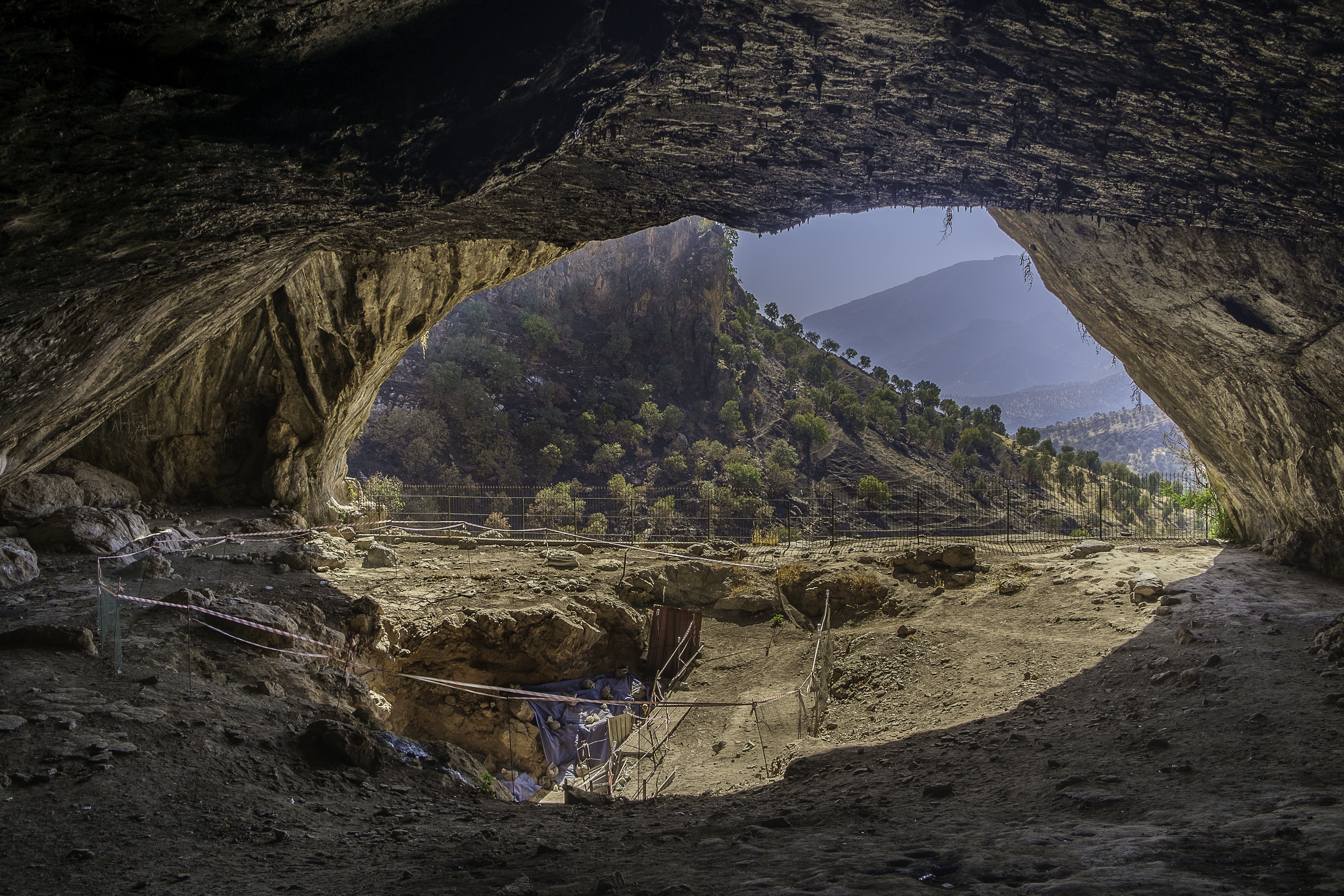|
Firdos Square
Firdos Square ( ar, ساحة الفردوس, Sāḥat al-Firdaus) is a public open space in central Baghdad, Iraq. It is named after the Arabic word ''Firdows'', which means "paradise". The site has been the location of several monumental artworks. Description The 17 Ramadan Mosque and two of the best-known hotels in Baghdad, the Palestine Hotel and the Sheraton Ishtar, are located on the square. The roundabout in the center of Firdos Square has been the site of several monuments beginning with the completion of the monumental arch ''The Unknown Soldier'' in 1959. It was subsequently replaced by the statue of Saddam Hussein that was removed by U.S. coalition forces during the invasion of Iraq in 2003. A green, abstract sculpture by Bassem Hamad al-Dawiri was commissioned to replace the Saddam statue. In 2009, the architect of the Monument to the Unknown Soldier Rifat Chadirji expressed interest in rebuilding the monument on its original site. As of 2013, the al-Dawiri statu ... [...More Info...] [...Related Items...] OR: [Wikipedia] [Google] [Baidu] |
Al-Rusafa, Iraq
Al-Rusafa or Al-Rasafa ( ar, ٱلرُّصَافَة \ ٱلرَّصَافَة, Ar-Ruṣāfah / Ar-Raṣāfah) is one of the nine administrative districts in Baghdad, administrative districts in Baghdad, Iraq, on the eastern side of the Tigris, River Tigris (on the west side of which is Al-Karkh). It is one of the old quarters of Baghdad, situated in the heart of the city, and is home to a number of public squares housing important monumental artworks. Description This district is an older area on the eastern side of Baghdad; its central downtown, commercial area, a centre of markets considered one of the four old central business districts of Baghdad (Karkh, Rusafa, Adhamiyah and Kadhimiya). It includes many urban features which have become landmarks including Firdos Square and Liberation Square, Baghdad, Liberation Square, the biggest landmark in Baghdad and one of the most visited. It has also been home to a number of monumental Iraqi art, artworks including the The Monument to ... [...More Info...] [...Related Items...] OR: [Wikipedia] [Google] [Baidu] |
Iraq War
{{Infobox military conflict , conflict = Iraq War {{Nobold, {{lang, ar, حرب العراق (Arabic) {{Nobold, {{lang, ku, شەڕی عێراق (Kurdish languages, Kurdish) , partof = the Iraq conflict (2003–present), Iraq conflict and the War on terror , image = Iraq War montage.png , image_size = 300px , caption = Clockwise from top: US troops at Uday Hussein, Uday and Qusay Hussein's hideout; insurgents in northern Iraq; the Firdos Square statue destruction, toppling of the Saddam Hussein statue in Firdos Square , date = {{ubl, {{Start and end dates, 2003, 3, 20, 2011, 12, 18, df=yes({{Age in years, months and days, 2003, 03, 19, 2011, 12, 18) , place = Iraq , result = * 2003 invasion of Iraq, Invasion and History of Iraq (2003–11), occupation of Iraq * Overthrow of Arab Socialist Ba'ath Party – Iraq Region, Ba'ath Party government * Execution of Saddam Hussein in 2006 * Re ... [...More Info...] [...Related Items...] OR: [Wikipedia] [Google] [Baidu] |
Monuments And Memorials In Iraq
A monument is a type of structure that was explicitly created to commemorate a person or event, or which has become relevant to a social group as a part of their remembrance of historic times or cultural heritage, due to its artistic, historical, political, technical or architectural importance. Some of the first monuments were dolmens or menhirs, megalithic constructions built for religious or funerary purposes. Examples of monuments include statues, (war) memorials, historical buildings, archaeological sites, and cultural assets. If there is a public interest in its preservation, a monument can for example be listed as a UNESCO World Heritage Site. Etymology It is believed that the origin of the word "monument" comes from the Greek ''mnemosynon'' and the Latin ''moneo'', ''monere'', which means 'to remind', 'to advise' or 'to warn', however, it is also believed that the word monument originates from an Albanian word 'mani men' which in Albanian language means 'rememb ... [...More Info...] [...Related Items...] OR: [Wikipedia] [Google] [Baidu] |
Buildings And Structures In Baghdad
A building, or edifice, is an enclosed structure with a roof and walls standing more or less permanently in one place, such as a house or factory (although there's also portable buildings). Buildings come in a variety of sizes, shapes, and functions, and have been adapted throughout history for a wide number of factors, from building materials available, to weather conditions, land prices, ground conditions, specific uses, prestige, and aesthetic reasons. To better understand the term ''building'' compare the list of nonbuilding structures. Buildings serve several societal needs – primarily as shelter from weather, security, living space, privacy, to store belongings, and to comfortably live and work. A building as a shelter represents a physical division of the human habitat (a place of comfort and safety) and the ''outside'' (a place that at times may be harsh and harmful). Ever since the first cave paintings, buildings have also become objects or canvasses of much artistic ... [...More Info...] [...Related Items...] OR: [Wikipedia] [Google] [Baidu] |
Al-Habboubi Square
Al-Habboubi Square ( ar, ساحة الحبوبي) is a public square and roundabout in central Nasiriyah. The statue of the Iraqi Poet Mohammed Saeed Al-Habboubi is located in the square and the statue was built in 1971. it is at the intersection of Nile and Habboubi streets. At its centre, one can see a statue of Iraqi poet Mohammed Saeed Al-Habboubi. See also *2020 Al-Habboubi Square attack
The Al-Habboubi Square attack was a violent conflict between members of the Sadrist Movement and anti-government protesters on November 27, 2020. Located in Al-Habboubi Square, Nasir ...
[...More Info...] [...Related Items...] OR: [Wikipedia] [Google] [Baidu] |
Iraqi Art
Iraqi art is one of the richest art heritages in world and refers to all works of visual art originating from the geographical region of what is present day Iraq since ancient Mesopotamian periods. For centuries, the capital, Baghdad was the Medieval centre of the literary and artistic Arab world during the Abbasid Caliphate, in which Baghdad was the capital, but its artistic traditions suffered at the hands of the Mongol invaders in the 13th century. During other periods it has flourished, such as during the reign of Pir Budaq, or under Ottoman rule in the 16th century when Baghdad was known for its Ottoman miniature painting. In the 20th century, an art revival, which combined both tradition and modern techniques, produced many notable poets, painters and sculptors who contributed to the inventory of public artworks, especially in Baghdad. These artists are highly regarded in the Middle East, and some have earned international recognition. The Iraqi modern art movement had a pro ... [...More Info...] [...Related Items...] OR: [Wikipedia] [Google] [Baidu] |
Media Coverage Of The Iraq War
The 2003 invasion of Iraq involved unprecedented U.S. media coverage, especially cable news networks. U.S. mainstream media coverage The most popular cable network in the United States for news on the war was Fox News, and had begun influencing other media outlets' coverage. Fox News is owned by Rupert Murdoch, a strong supporter of the war. On-screen during all live war coverage by Fox News was a waving flag animation in the upper left corner and the headline "Operation Iraqi Freedom" along the bottom. The network has shown the American flag animation in the upper-left corner since the September 11, 2001 terrorist attacks. A study conducted in 2003 by Fairness & Accuracy in Reporting (FAIR) tracking the frequencies of pro-war and antiwar commentators on the major networks found that pro-war views were overwhelmingly more frequent. The FAIR study found that the two networks notably least likely to present critical commentary were Fox and CBS. Anti-war celebrities appearing freque ... [...More Info...] [...Related Items...] OR: [Wikipedia] [Google] [Baidu] |
Shia
Shīʿa Islam or Shīʿīsm is the second-largest Islamic schools and branches, branch of Islam. It holds that the Prophets and messengers in Islam, Islamic prophet Muhammad in Islam, Muhammad designated Ali, ʿAlī ibn Abī Ṭālib as his Succession to Muhammad, successor (''khalīfa'') and the Imamah (Shia doctrine), Imam (spiritual and political leader) after him, most notably at the event of Ghadir Khumm, but was prevented from succeeding Muhammad as the leader of the Muslims as a result of the choice made by some of Companions of the Prophet, Muhammad's other companions (''ṣaḥāba'') at Saqifah. This view primarily contrasts with that of Sunni Islam, Sunnī Islam, whose adherents believe that Muhammad did not appoint a successor before Death of Muhammad, his death and consider Abu Bakr, Abū Bakr, who was appointed caliph by a group of senior Muslims at Saqifah, to be the first Rashidun, rightful (''rāshidūn'') caliph after Muhammad. Adherents of Shīʿa Islam are c ... [...More Info...] [...Related Items...] OR: [Wikipedia] [Google] [Baidu] |
Moqtada Sadr
Muqtada al-Sadr ( ar, مقتدى الصدر, Muqtadā aṣ-Ṣadr; born 4 August 1974) is an Iraqi politician and militia leader. He is the leader of the Sadrist Movement and the leader of the Peace Companies, a successor to the militia he had previously led during the American military presence in Iraq, the "Mahdi Army." In 2018, he joined his Sadrist political party to the Saairun alliance, which won the highest number of seats in the 2018 and 2021 Iraqi parliamentary elections. Al-Sadr is suspected in US news media of having ordered the assassination of rivalling Shia leader Abdul-Majid al-Khoei in 2003, a charge he denies and which remains unproven. Titles He belongs to the prominent Sadr family that hails from Jabal Amel in Lebanon, before later settling in Najaf. Sadr is the son of Mohammad Mohammad Sadeq al-Sadr, an Iraqi religious figure and politician who stood against Saddam Hussein, and the nephew of Mohammad Baqir al-Sadr. He is often styled with the honorific ti ... [...More Info...] [...Related Items...] OR: [Wikipedia] [Google] [Baidu] |
History Of Iraq (2003–2011)
Iraq is a country in Western Asia that largely corresponds with the territory of ancient Mesopotamia. The history of Mesopotamia extends from the Lower Paleolithic period until the establishment of the Caliphate in the late 7th century AD, after which the region came to be known as Iraq. Encompassed within Iraqi territory is the ancient land of Sumer, which came into being between 6,000 and 5,000 BC during the Neolithic Ubaid period of Mesopotamian history, and is widely considered the oldest civilization in recorded history. It is also the historic center of the Akkadian, Neo-Sumerian, Babylonian, Neo-Assyrian, and Neo-Babylonian empires, a succession of local ruling dynasties that reigned over Mesopotamia and various other regions of the Ancient Near East during the Bronze and Iron Ages. Iraq during antiquity witnessed some of the world's earliest writing, literature, sciences, mathematics, laws and philosophies; hence its common epithet, the Cradle of Civilization. This era o ... [...More Info...] [...Related Items...] OR: [Wikipedia] [Google] [Baidu] |
Seattle Post-Intelligencer
The ''Seattle Post-Intelligencer'' (popularly known as the ''Seattle P-I'', the ''Post-Intelligencer'', or simply the ''P-I'') is an online newspaper and former print newspaper based in Seattle, Washington, United States. The newspaper was founded in 1863 as the weekly ''Seattle Gazette'', and was later published daily in broadsheet format. It was long one of the city's two daily newspapers, along with ''The Seattle Times'', until it became an online-only publication on March 18, 2009. History J.R. Watson founded the ''Seattle Gazette'', Seattle's first newspaper, on December 10, 1863. The paper failed after a few years and was renamed the ''Weekly Intelligencer'' in 1867 by new owner Sam Maxwell. In 1878, after publishing the ''Intelligencer'' as a morning daily, printer Thaddeus Hanford bought the ''Daily Intelligencer'' for $8,000. Hanford also acquired Beriah Brown's daily ''Puget Sound Dispatch'' and the weekly ''Pacific Tribune'' and folded both papers into the ''Inte ... [...More Info...] [...Related Items...] OR: [Wikipedia] [Google] [Baidu] |







